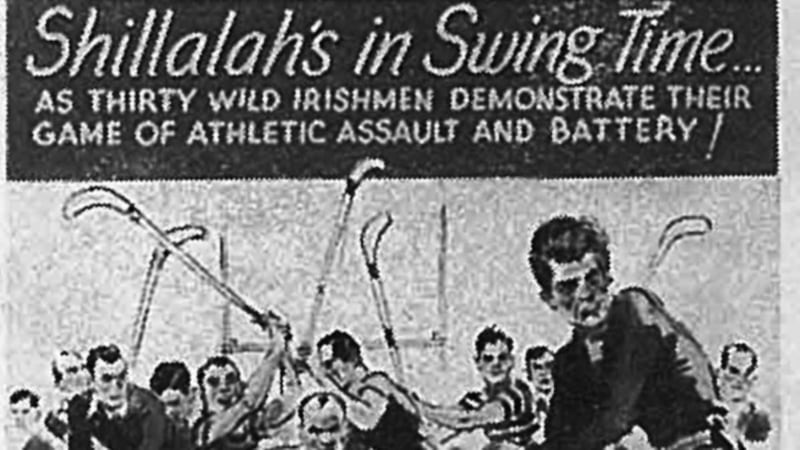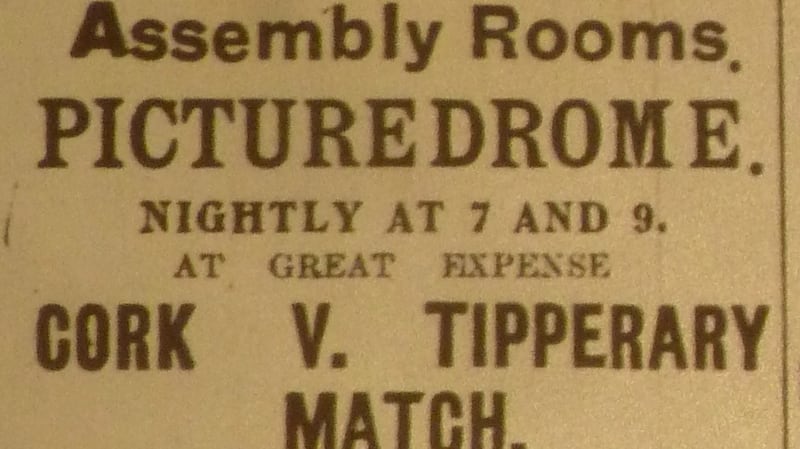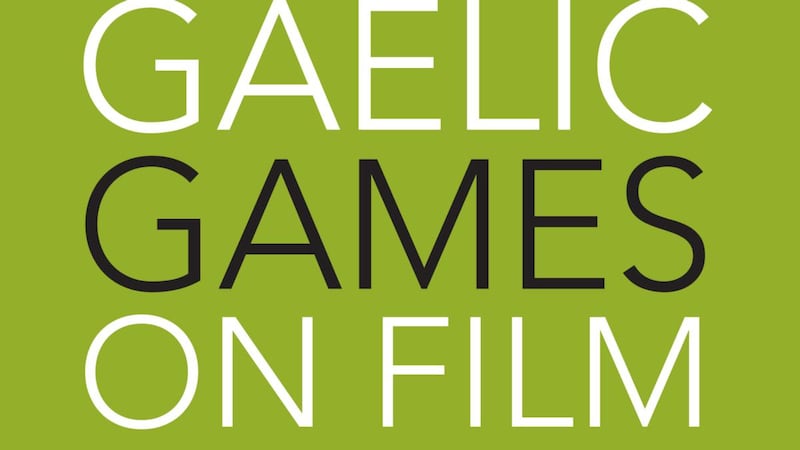The GAA moved from fearing to embracing television without thinking twice about it. The only note of contention is when that transformation occurred.
Was it during the transformative years in the mid 1990s when a series of electrifying and live televised hurling championship games – fastened to an ingenious marketing campaign by Guinness – cast the old sport in a fresh light?
Or was it when Sky Television spotted the commercial opportunities within Gaelic Games and bid for a slice of the broadcast rights?
Certainly, it was between those two points that the GAA became pragmatic and commercial about the consequences of the regular live broadcast of its games.
But the association’s sensitivity about the broadcast and filmic portrayal of its games and values has always been there. At a conference some years ago, someone casually asked Seán Crosson whether he knew if there was much Gaelic games content on film. Stumped, he replied that he didn’t think so. Still, the question stoked his curiosity.
“I was aware of Clash of the Ash and such films but when I started to look at the different ways in which Gaelic games were filmed, a much larger and a fascinating story began to reveal itself.”
Crosson is the director of the Huston School of Film and Digital Media in NUIG. His research into the subject over the following decade has led to ‘Gaelic Games on Film’ (Cork University Press), a fascinating chronology of the portrayal of Ireland’s sporting culture on screen, from Hollywood to horror movies and Irish domestic productions.
The book contains surprises throughout, from the strong seam of hurling themed content mined by American cinema from the 1930s to the 1960s to the attempts to censor – and quash – Fergus Tighe’s landmark 1987 film, Clash of the Ash.
The profile of the GAA’s annual US tours in the 1920s and 1930s and the novelty of hurling – thirty combative Irish men with sticks! – inspired a series of short films produced for cinema audiences and gleefully exploiting the potential for violence within the game.
Those ‘Vitaphone Varieties’ pictures may or may not have reached Irish audiences but a 1936 film simply titled Hurling, certainly provoked high indignation when it debuted on Dublin and London screens two years after its original release.
Gradual transformation
A GAA delegation led by Pádraig Ó Caoimh visited the Irish film censor to ask that the ‘objectionable comments’ within the narration be removed.
Pete Smith, the producer of the film, provides what Crosson describes as a 'mock-comic voice' throughout and the publicity posters he unearthed make it plain that Smith was interested in the portrayal of hurling as an unbridled and scarcely civilised sport.
‘Shillalah’s In Swing Time . . .” reads one headline above the subtext: “As thirty wild Irishmen demonstrate their game of athletic assault and battery.’ The film’s climatic scene revolves around the conceit that the players on both sides batter one another so thoroughly that no player is left standing by the conclusion of the game. The publicity sheet reads: ‘They are all laid out as Chopin’s Funeral March sounds a sad accompaniment.’

“The GAA was absolutely very sensitive about how its games were depicted,” says Crosson. “And they were understandable sensitivities.”
But what interests him is the gradual transformation of the presentation of Irish stereotypes on screen over the following 20 years.
"Those hurling shorts in the 1930s connected with the Irish tropes in mainstream film – you think of the Irish Americans with the gangster genre and James Cagney. It was a key component of Irishness on screen. But I should say it is more complex in the sense that there is a balancing of the violent Irish with the benign Irish – the priest or policeman. You do see an evolution in the depiction of Irishness.
“So they are transforming that stereotype from the 19th century threatening figure into a more slapstick and comic figure. It is a process to bring you into a more positive portrayal of Irish identity. So the fighting Irish was transformed from pejorative to a central part of what the American dream is about. You think of the Fighting Irish or Notre Dame and the relationship of that with overcoming and with perseverance.”
The problematic depictions remained: the Oscar nominated Three Kisses (1957), narrated by a fictive young hurler named Colm Gallagher in what Crosson terms "an extraordinary accent", depicts his village as complete with horse and cart and water pump.
Hurling, with its obvious visual dramatic appeal, attracted film makers much more frequently than Gaelic football
During the filming of The Rising of the Moon (1957), one of John Ford’s Irish-themed projects, both the Irish Press and Irish Independent reported that the director was shooting scenes featuring hurlers returning victorious from a game – on stretchers.
Predictably, the GAA was alarmed and sought assurances from vested interests, including Lord Killanin, one of the directors of the Four Provinces Productions film company, that the reports were erroneous.
Impossible task
A deputation from the Clare County Board actually visited Killanin at his home in Kilkee and iterated by statement its “grave concern” that the “national game of hurling should, or would, appear to be held up to ridicule”.
Watching the stand-off was Myles na gCopaleen, the Irish Times columnist, who a few weeks later dismissed the “farcical drool emitted by the GAA” and delighted in quoting at length from a match report in the Clare Champion between two fierce local rivals which asserted that there was “literally a procession to the county hospital from the match”.
“Myles was ever mischievous in what he said and how he said it,” Crosson says. “And I suspect he may have recognised the subtleties in what Ford was trying to do and the performative elements in it whereas the GAA was more concerned about the association of their sport with violence.”
Hurling, with its obvious visual dramatic appeal, attracted film makers much more frequently than Gaelic football. That presented a constant dilemma: how to present the game authentically.
For the 1958 motion picture Rooney (the poster tag line read: 'As IRISH as the blarney and as funny as they come'), the Dublin dual GAA star Des 'Snitchy' Ferguson was given the ultimately impossible task of coaching John Gregson, the Liverpool born lead actor, in the rudiments of hurling.
"Mr Gregson is not . . . Christy Ring, " Benedict Kiely sniffed in his Irish Press review.
"It was extraordinary that the film was made as it was, based on a Catherine Cookson book," Crosson says. "It was originally set in South Shields and it was moved to Dublin. Gregson's attempts to carry the sliothar on the hurl are comical to watch. They tried to integrate the actual 1957 All-Ireland final into that sequence.

“It’s too disjointed to be convincing. In most films you build to a climactic moment but the hurling scenes don’t convince. And it’s similar to other films in that it has the club game that ends up in a big fighting match. Even in the All-Ireland scenes, the more violent encounters are emphasised.”
Crosson makes a convincing argument that the profusion of GAA films coincided with the radical transformation in fortune, power and image of Irish America between the 1930s and 1960s, culminating with the ascent of John Fitzgerald Kennedy to the White House.
“That’s a critical period in the transformation of Irish-America. They are moving from being the disreputable characters to becoming much more positive and mainstream. It moves from the margins to the centre. The Irish in America become part of hegemonic society. And I think these films are part of that wider representation.”
High point
Certainly, since that time, the presentation of Irish games on film has been more localised. Crosson reckons that the Clash of the Ash probably represents the high point of GAA movies.
“It is the best film we have for its depiction of hurling. The church still had some power and the local bishop after seeing the script made considerable attempts to try and stop the production. But he failed in that.
“There was, by then, this possibility and willingness to contest the control of the church and it fortunately allowed Fergus to continue with the production. It is a fascinating depiction of Ireland in the 1980s not just for hurling but because it captures a moment in Irish society. There was a real narrowness of opportunity and employment and all of these themes are prominent.”
In retrospect, it seems fanciful that Gaelic sports could ever have been a subject developed for treatment by Hollywood companies. It may have been a moment in time. As Crosson points out, big international sports films inevitably focus on global sports.

“The greatest sports films aren’t primarily about sport. Boxing has probably been the most successful in that regard.
“So Gaelic games tend to have a focus that is beyond the reach of international distributors. But in documentary there has been great work done – in Pat Comer’s, A Year Til Sunday, you find film moving from external observer into the heart of what it is that drives the individuals.”
Crosson's research brought him to archive rooms on both sides of the Atlantic but he was most intrigued by the All-Ireland footage in the National Film Institute filmed by George Fleishmann, the former Luftwaffe pilot whose plane was shot down over Ireland in 1941. Fleishmann had trained in the Berlin Film Academy as a cameraman and worked on Leni Riefenstahl's Olympia.
In Ireland, he worked on the filming of the All-Irelands and Crosson believed he was probably the “greatest influence on the initial style and focus of the films” with elevated and roving camera positions and a lingering emphasis on the pre-match ceremonies, a practice that continued long after Fleishmann had left Ireland for Canada.
"And as someone from Cavan it was fascinating to see John Joe Reilly, Mick Higgins playing in their prime. But the context is fascinating too. They captured the build-up so you see Dublin city in the late 1940s and the numbers on bicycles and busses. Sometimes people in open top lorries.
"I interviewed players from that period including Mattie Gilsenan and Mick Higgins. Matt explained how a local guy would wash out the pig lorry and people would stand in the back to go up to the game on Sunday. So the camera and how those days were filmed became a key component of nation-building in defining what it is to be Irish."





















